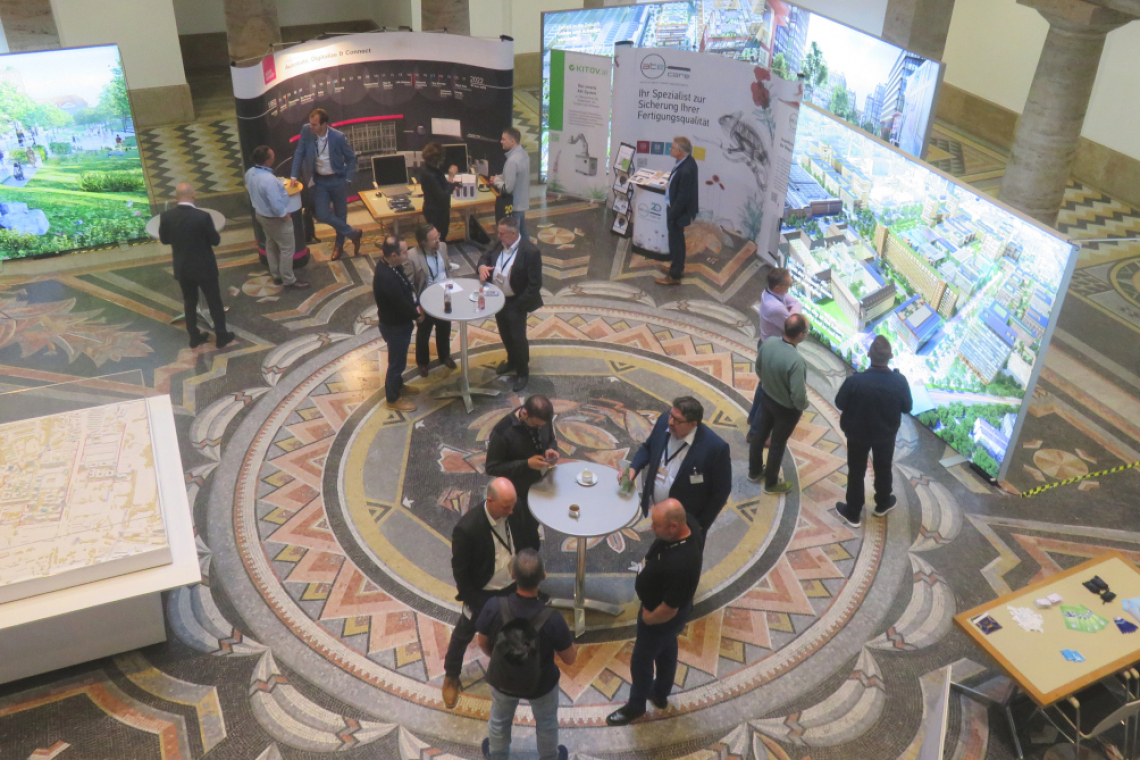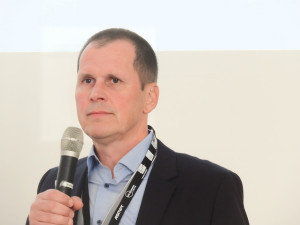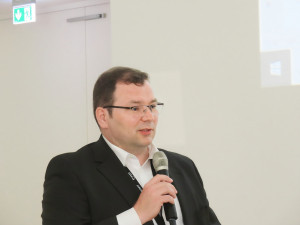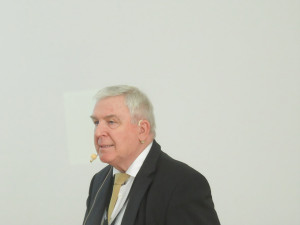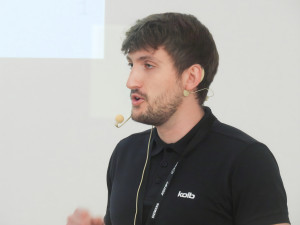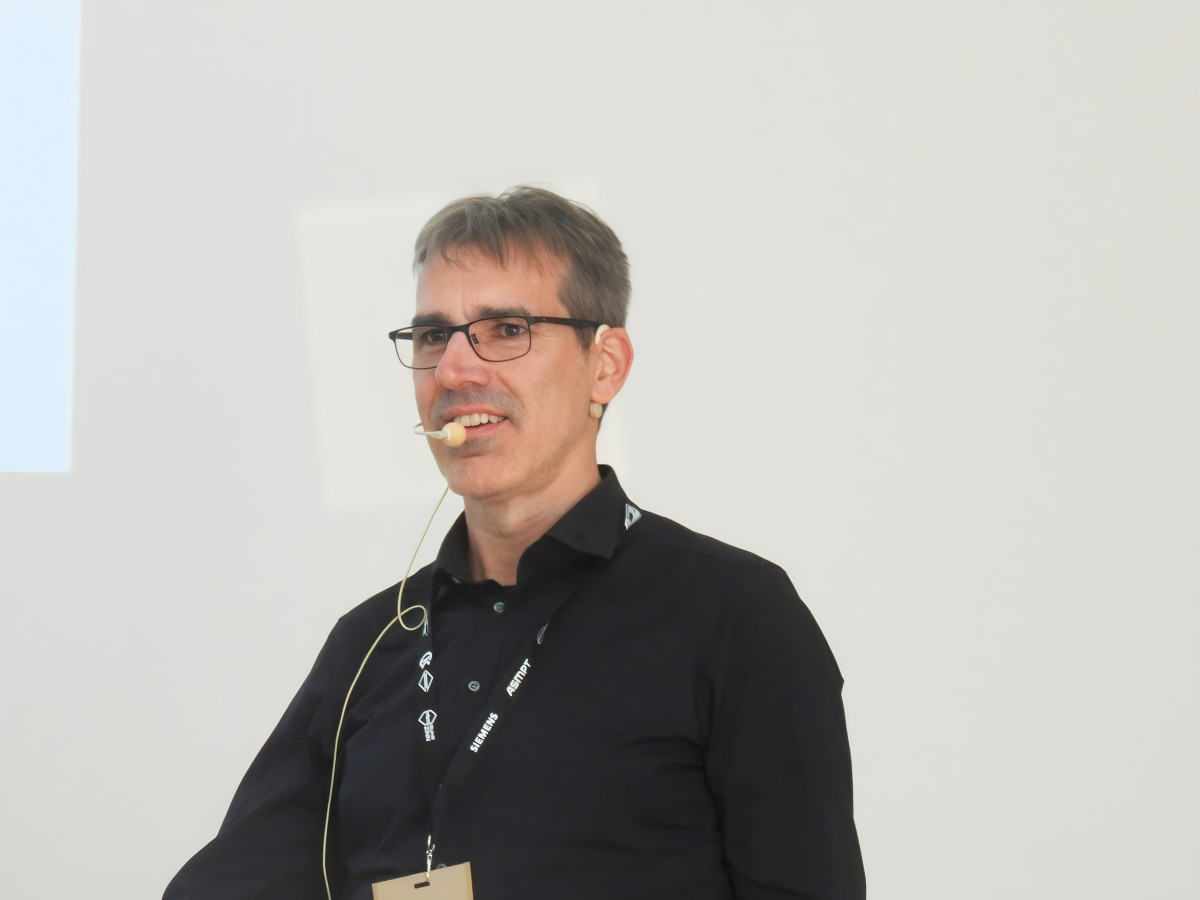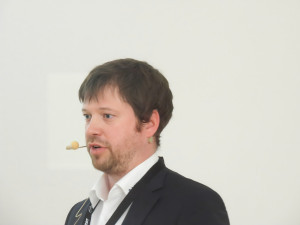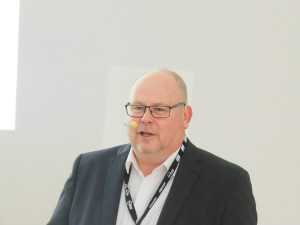At the 13th Berlin Technology Forum, the focus was on sustainability, process optimization and digitalization. Because these are becoming increasingly important for the electronics production of the future.
The Berlin Technology Forum was once again organized by the partner companies Siemens, Rehm Thermal Systems, ASM Assembly Systems, ASYS Group, Balver Zinn, ATEcare, Christian Koenen, kolb Cleaning Technology, MTM Ruhrzinn, Vliesstoff Kasper and Zevac at the Conference Center Berlin of Siemens AG. The presentations were complemented by a table top exhibition, in which Scheid IT GmbH and Würth Elektronik participated alongside the partner companies.
After the welcoming address, moderators Bernd Müller, Siemens AG, and Dr. Paul Wild, Rehm Thermal Systems, introduced the topic by looking at the situation and the challenges.
Lecture block on the circular economy and sustainability
Lothar Pietrzak, MTM Ruhrzinn, used the example of metal recycling to show that and howCO2 reduction is possible through the circular economy. The life cycle assessment of secondary tin from recycling shows clear advantages compared to primary tin from ores: only just under 1% of the energy is required and less than 1% ofCO2 is emitted. And thanks to a new chemical separation process for solder powder without burning organics, this can be preserved so that no destruction of the already completed transformation of the solder into the powder form takes place, which is associated with furtherCO2 reduction and energy savings. As a specialist disposal company, MTM Ruhrzinn offers recycling not only for tin waste but also for waste containing precious metals, with legally compliant waste management and a sustainability certificate.
André Neumann, kolb Cleaning Technology, also addressed the requirements of the Closed Substance Cycle Waste Management Act in his presentation 'Sustainable cleaning processes - more avoidance instead of recycling'. He presented his company's products (cleaning systems and chemicals for various applications) and services as a solution to the primary requirement of avoiding waste.
After a coffee break, Michael Matthes, Würth Elektronik, used two examples from his company's extensive PCB portfolio to demonstrate that new PCB technologies are not only better, but also more sustainable. He discussed 3D technology, more specifically the digital additive solder mask 's.mask', which is used to coat only the required areas so that the effective area coverage of the solder mask is only 0.7%, for example, and corresponding material savings are realized. The stretchable circuit board 'STRETCH.flex' consists of polyurethane as the base material. It must be reinforced with a support material for transportation through the soldering system and soldering must be carried out with a low-melting alloy due to its temperature sensitivity. The considerably reduced process temperature of 'STRETCH.flex' can save up to 40 % of electrical energy.
Process optimization lecture block
Matthias Eymann, Balver Zinn, explained how sustainability can be improved through process optimization in soldering. The solvent content of fluxes (mostly alcohol) is 97% and is therefore the largestCO2 factor. However, the possible use of secondary IPA (75% lessCO2) is questionable, as is the use of water-based fluxes for many applications. Partially water-based fluxes are an alternative. The dropjet is the most economical way of applying or dosing the flux. Other potential savings for soldering systems include shielding gas, night setback or switching the machine off completely and standby mode. The solder pot temperature should be as low as possible. Solder bath management is also important so that the solder can be used for as long as possible, for example with antioxidants and nitrogen to reduce scaling. A lot ofCO2 can be saved by using secondary tin instead of primary tin. Low-melting solders such as SnBi28 are an alternative for a number of applications. How Balver Zinn helps with the implementation of process optimization and on the way to sustainability was explained.
After the lunch break, Werner Eckert and Christian Koenen explained how stencil printing can be improved in the fine pitch area. Frequent challenges in fine-pitch printing are unevenness on the substrate, e.g. due to excessive via fillings, markings (lettering print or stickers) or solder resist. Substrate misalignment and incorrect pad sizes also cause problems with paste printing. Optimizations are possible with favorably positioned LP supports, scaling, milled step stencils, PLASMA 3.0 coating and optimized doctor blade parameters. As printing in new 'spheres', Torsten Vegelahn, ASYS Automation Systems, presented a further step towards a fully autonomous printing system, having previously defined the autonomy levels. Autonomy level 1 includes a magazine for paste supply with 9 cartridges, enabling operation for up to 36 hours and different types (alternating operation). Autonomy level 1 also includes a printing unit with new functions (feeding and positioning of the stencil, automated squeegee change, adjustable squeegee angle and force), an electric paste dispenser with volume regulation and control and a stencil magazine. The associated new electric squeegee head 'Sphere' can pick up paste from the stencil and transfer paste to a new stencil. It enables variable squeegee angles and squeegee cassettes in standard sizes/lengths. It is interchangeable between printers and is also suitable for stepped stencils. The operator can set up the machine when he has time - even during printing. The printer then carries out the next set-up change independently, i.e. autonomously.
Digitalization lecture block
After a coffee break, Markus Scheid, Scheid IT, spoke about connectivity - communication interfaces in electronics production. The new standard for M2M, i.e. horizontal communication in the production line, is IPC-HERMES-9852. It is the official successor to IPC-SMEMA-9851. The product now initiates changes to the settings of the machines in the line by means of manufacturer-independent machine-to-machine communication. The quality is recorded in each production step by identifying the product and recording data, e.g. serial number, overall status (pass/fail ...) per PCB. By transferring the digital twin in conjunction with the PCB using IPC-HERMES-9852, the line complexity is reduced and made more transparent. There are several standards for vertical communication from the machine to the MES and ERP system. The IPC CFX-2591 standard means that only one barcode reader is required at the start of the line and all data is synchronized. This allows process interlocking, monitoring, traceability, WIP tracking, material management, maintenance data, OEE and energy management, product changeovers and program download to be supported. IPC CFX-2591 thus enables the control and monitoring of the complete line including closed loop. With SELMA's SMEMA Hermes Bridge, there is also a solution for older machines in the line to bridge them in terms of data technology.
Dr. Daniel Klein, Siemens AG, explained how AI and digital twins can revolutionize electronics production with some practical examples. In the case of AOI, for example, it was found that in many productions only 70% of the assemblies are assessed as 'pass' by the system in the first run and the remaining 95% have pseudo defects. The false evaluation rate of operator errors is 30%. Reducing the pseudo error rate of the AOI system by 50% through AI can increase the pass yield by 25% and lead to correspondingly large savings. In milling machines, developing spindle errors can be detected three days in advance using AI, so that intervention can be made in good time and the spindle can be replaced, which also saves a lot of money.
The 13th Berlin Technology Forum ended with a short concluding discussion.
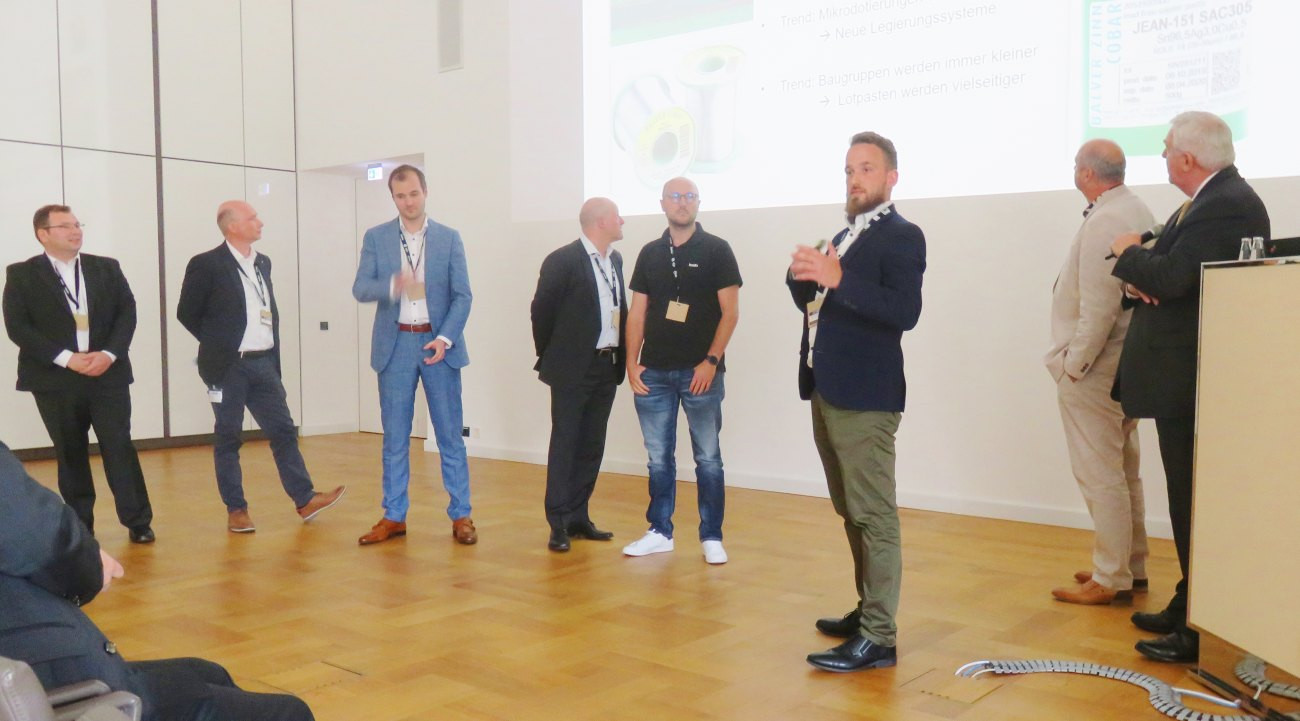 Exchange at the Spotlights - the short presentations by the partner companies
Exchange at the Spotlights - the short presentations by the partner companies

